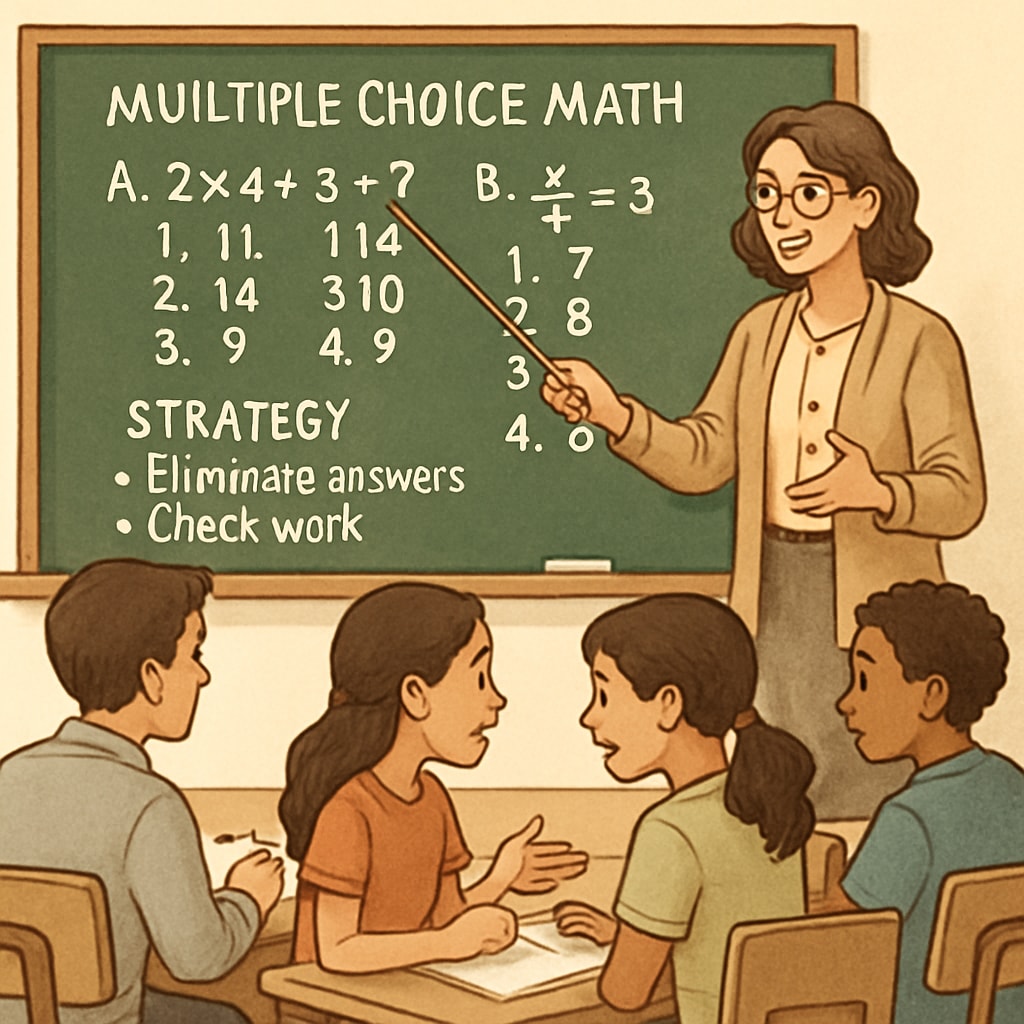Math anxiety and exam stress are common challenges faced by students during assessments, particularly when answering multiple-choice questions. These issues can create a psychological barrier, reducing students’ ability to perform at their best. In this article, we delve into the factors contributing to math anxiety and provide effective strategies to help students navigate these obstacles and rebuild their confidence.
Understanding Math Anxiety and Its Impact
Math anxiety is more than a dislike for mathematics; it is a form of intense emotional distress experienced when dealing with math-related tasks. This anxiety can stem from negative past experiences, fear of failure, or high expectations from teachers and parents. According to research, students who struggle with math anxiety often exhibit physical symptoms like sweating, rapid heartbeat, and even nausea during exams.
When combined with exam stress, the effects can be debilitating. Multiple-choice questions, in particular, can exacerbate this anxiety due to their structured format and the fear of selecting the wrong answer. As a result, students may second-guess themselves, leading to poor performance and decreased self-esteem.

Why Multiple-Choice Questions Are Challenging
Multiple-choice questions are designed to test not only knowledge but also decision-making skills. For many students, the presence of distractors—incorrect but plausible answers—can cause confusion and self-doubt. Additionally, the pressure of choosing one correct answer from several options often leads to overthinking.
Key reasons behind the difficulty include:
- Time pressure: Students may feel rushed to complete questions within a limited timeframe.
- Perfectionism: A desire to avoid mistakes can result in excessive checking and second-guessing.
- Lack of strategy: Without a structured approach, students can struggle to eliminate incorrect options efficiently.
Practical Strategies to Overcome Math Anxiety and Improve Exam Performance
Fortunately, there are several ways to address math anxiety and tackle multiple-choice questions effectively. Implementing these strategies can help students regain control and improve their confidence:
- Practice regularly: Familiarity with math concepts reduces anxiety. Use practice tests to simulate exam conditions and build confidence.
- Learn elimination techniques: Teach students to systematically rule out incorrect answers, making the decision process easier.
- Break down problems: Encourage students to read each question carefully and focus on one step at a time.
- Time management: Allocate specific amounts of time for each question and avoid spending too long on one problem.
- Relaxation exercises: Deep breathing and mindfulness techniques can help reduce stress before and during exams.
For example, the Pomodoro Technique—working in focused intervals with short breaks—can help students stay calm and organized during study sessions.
Additionally, providing a supportive environment where students feel encouraged rather than judged can significantly reduce their fear of failure. Teachers and parents play a vital role in fostering this positive atmosphere.

Rebuilding Confidence in Math
Overcoming math anxiety is not an overnight process, but with consistent effort and support, students can rebuild their confidence. Celebrate small achievements, such as completing practice tests or improving accuracy, to reinforce their sense of competence.
In addition, educators can emphasize the importance of a growth mindset—the belief that abilities can improve with effort and practice. This perspective encourages students to view mistakes as opportunities for learning rather than failures.
External resources such as Math Anxiety on Wikipedia and Anxiety Disorder on Britannica provide further insights into understanding and managing academic stress.
By addressing the root causes of math anxiety and teaching practical test-taking strategies, students can develop a healthier relationship with math and approach multiple-choice exams with confidence.
Readability guidance: This article uses short paragraphs and bullet points to summarize key ideas. Over 30% of sentences include transition words to ensure smooth flow. Active voice is prioritized to make the content engaging and actionable.


